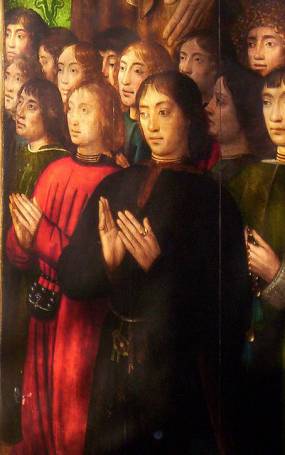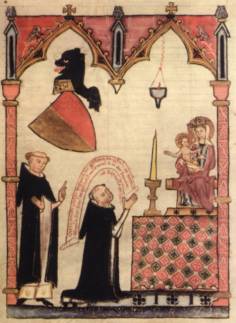

Centre for Dominican Studies of Dacia
Mendicant Networks with Lay Communities
Presentation of session held at the International Medieval Congress (IMC) in Leeds, 7 July 2014.


Sponsor: Centre for Dominican Studies of Dacia.
Organiser: Johnny Grandjean Gøgsig Jakobsen, Nordisk Forskningsinstitut, Københavns Universitet.
Moderator/Chair: Anne Holloway, Monash University.
Session abstract
Every medieval monastic house formed a community of its own. But often these convents also engaged in more or less formalized relations with communities outside the monastery walls. Not least the mendicant orders formed several such networks with lay groups in society, for numerous purposes and in numerous forms. This session will look at Dominican and Franciscan networks with different types of lay communities around medieval Europe - both formal and informal - to explore the background, benefits and consequences of such engagements for both sides.
Christian Oertel, Friedrich-Schiller-Universität, Jena.
A - for Swedish standards - high number of charters provide information about donations of Upplandian nobles towards the Dominican convent in Sigtuna in the late 13th and early 14th centuries. Many of the donors also wanted to be buried there. The talk will explore the possibility of tracing connections within a regional aristocracy through the common interest of their members in a certain convent.
Anu
Mänd, Tallinn University.
This paper will focus on manifold relations between the Tallinn Dominican friary and various social groups. The friary not only made contracts with private individuals but also had long lasting relationship with several associations (town council, various guilds and crafts), who founded altars and chantries in the Dominican church. There was a direct connection between the material income and liturgical obligations of the friars. This paper discusses how the mutual relations were established, regulated and developed over time, and how they ended during the Reformation (as compared to other mendicant friaries in Livonia).
Jill
Moore, Birkbeck, University of London.
Medieval inquisitors depended on a team of lay and clerical support staff - notaries, heralds, familiares and general servants, plus their vicars and socii. Who were these individuals? Did they form a stable team, working for successive inquisitors, or disperse when the inquisitor's own period of office ended? Using a variety of sources, this paper compares the inquisitors' teams in Bologna (Dominican) and Florence (Franciscan) between c. 1297 and c. 1332. The surprising continuity of staffing illuminates inquisitors' support systems and shows that - contrary to some scholars' views - the medieval inquisition in Italy was by this time a fully-formed bureaucratic institution.

Centre
for Dominican Studies of Dacia
Johnny
G.G. Jakobsen, Department of Nordic Research, University of Copenhagen
Postal address: Njalsgade 136, DK-2300 Copenhagen, Denmark ● Email: jggj@hum.ku.dk